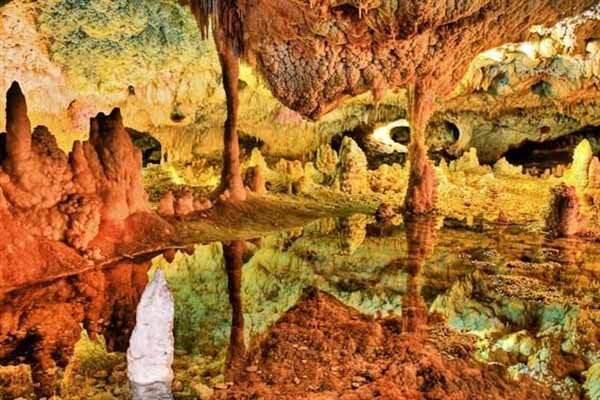Iran (IMNA) - Caves were the first locations people sought sanctuary to shield themselves from risks like animal attacks, heat, and cold. caverns, having hosted early people, serve as narrators of their existence, and because of their stability, caverns can reveal vital information about our predecessors.
Caves, with their unique ecosystems, are regarded as important sites in human history. However, a variety of issues, including as over tourism, pollution, mining operations, and road building, pose a threat to the caverns.

Caves have an important function in supplying subsurface water supplies. They are, in fact, the world's primary source of water, thus they must be protected. They may be used to assess the level of subsurface water resources, as well as their existing and future conditions. Furthermore, it can assist predict which areas are most likely to experience drought in the future. Caves are home to a variety of creatures and insects whose existence is necessary for human survival; without them, farming may not be feasible.
The bat is one of the most valuable species found in caves. Different bat species devour various insect pests, hence increasing agricultural success. Unfortunately, in recent years, human gluttony and endless activities in nature have harmed caves.

For the same reason, in the Iranian year 1395 (2016-2017), the official Clean Cave Day was added to the official calendar to raise public awareness about the necessity of cave preservation.
This year, like in previous years, authorities from the cave and speleology organization, the Department of Environment, and citizens aim to clean up caverns in all provinces of the country.
There are also initiatives to create awareness among people, local communities, and visitors about the need of protecting cave biodiversity and water supplies. They intend to use the potential of collaborative conservation to safeguard vulnerable and significant subterranean ecosystems.
Regular keeping track of caves, especially tourist caves, the creation of a cave database, selecting caves for conservation, analyzing the capacity of tourist caves, safeguarding cave biological variety, and protecting water resources are among the initiatives to be carried out jointly.

The following are the negative factors affecting caves: tourism activities that exceed the cave's capacity; sports and recreational activities; environmental pollution; urban, rural, and industrial development; agricultural development; dam and road construction; pasture destruction; and deforestation.
Other factors that have a negative impact on caves include mining and illegal extraction of underground water, hunting and illegal trafficking of cave species, irregular sampling for research purposes, the introduction of non-native species, the destruction of stalactites and stalagmites, and noise pollution.


Your Comment